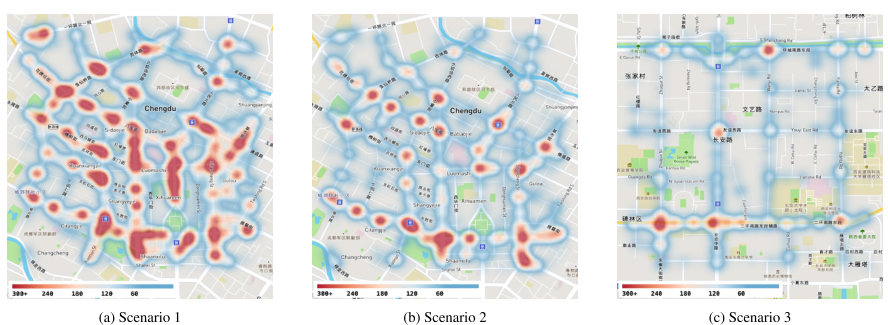团队曹菁菁副教授与重庆大学刘凯教授课题组合作撰写的学术论文《Cooperative Sensing and Heterogeneous Information Fusion in VCPS: A Multi-Agent Deep Reinforcement Learning Approach》,于2023年12月20日被IEEE期刊《IEEE Transactions on Intelligent Transportation Systems》(IF=8.5)收录发表。
《IEEE Transactions on Intelligent Transportation Systems》是智能交通系统领域top期刊,中科院大类分区一区,主要发表电气、电子工程与信息技术的理论,实验和操作方面,应用于智能运输系统(ITS)的各种研究、信息技术在交通系统中的设计、分析和控制,集中讨论许多技术方面。

研究背景:
近年来,传感技术和车载通信的进步推动了车载网络物理系统(vehicular cyber-physical systems,VCPS)的发展,它是下一代智能交通系统(intelligent transportation systems,ITSs)的关键推动因素。在VCPS中,车辆可以协同感知和上传交通灯状态、车辆位置、点云数据和监控视频等异构信息。基于感知信息的融合,可以在边缘节点构建车联网中车辆位置、速度、行驶方向等要素物理状态和交通灯状态的逻辑映射视图。要在逻辑视图中构造的特定元素由特定的ITS应用程序决定,车辆边缘计算(vehicle edge computing,VEC)在支持高密度车辆通信、海量数据传输和车辆网络边缘的自适应计算卸载方面成为一种很有前途的范例,研究VEC中高质量的信息物理融合具有重要意义。
论文简介:
协同感知和异构信息融合是实现VCPS的关键。本文首次尝试通过设计一种新的视点年龄(AoV)度量来定量度量VCPS的质量。具体来说,在VEC中,异构信息可以通过车对基础设施(V2I)通信协同感知和上传的系统架构。通过融合边缘节点的异构信息构建逻辑视图。在此基础上,推导了基于多类别M/G/1优先队列的协同感知模型,并通过对逻辑视图的时效性、完整性和一致性建模来定义AoV。在此基础上,提出了一种基于多智能体差异奖励的V2I带宽分配行为评价(mdra-vba)解决方案。系统状态包括车辆感知信息、边缘缓存信息和视图需求。车辆动作空间由感知频率和信息上传优先级组成。设计了一种基于差值奖励的积分分配方法,将系统奖励(定义为VCPS质量)划分为车辆的差值奖励。边缘节点根据预测的车辆轨迹和视图要求为车辆分配V2I带宽。
Cooperative sensing and heterogeneous information fusion are critical to realize vehicular cyber-physical systems (VCPSs). This paper makes the first attempt to quantitatively measure the quality of VCPS by designing a new metric called Age of View (AoV). Specifically, we first present the system architecture where heterogeneous information can be cooperatively sensed and uploaded via vehicle-to-infrastructure (V2I) communications in vehicular edge computing (VEC). Logical views are constructed by fusing the heterogeneous information at edge nodes. Further, we formulate the problem by deriving a cooperative sensing model based on the multi-class M/G/1 priority queue, and defining the AoV by modeling the timeliness, completeness and consistency of the logical views. On this basis, a multi-agent difference reward based actor-critic with V2I bandwidth allocation (MDRAC-VBA) solution is proposed. The system state includes vehicle sensed information, edge cached information and view requirements. The vehicle action space consists of the sensing frequencies and uploading priorities of information. A difference-reward-based credit assignment is designed to divide the system reward, which is defined as the VCPS quality, into the difference reward for vehicles. Edge node allocates V2I bandwidth to vehicles based on predicted vehicle trajectories and view requirements.
